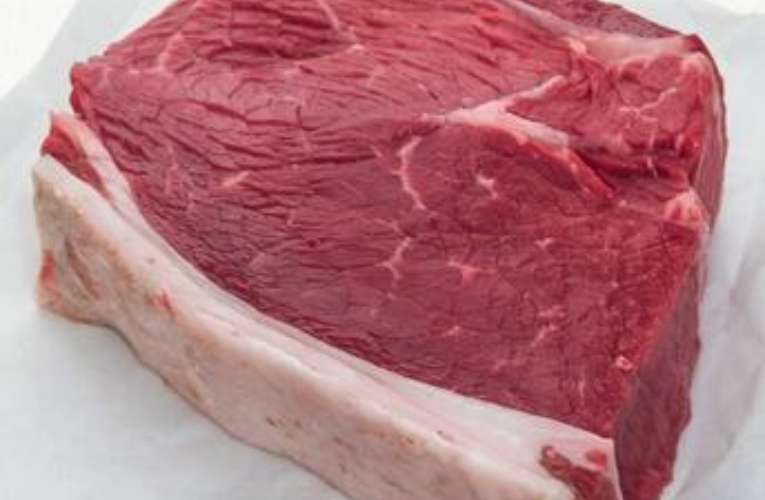Steak is a popular culinary delight that comes from various animals, but it is most commonly associated with beef. The rich and flavorful cuts of steak are derived from the muscles of cattle, such as cows and bulls.
These cuts are treasured for their tenderness, juiciness, and ability to be cooked to perfection. Whether it’s a juicy ribeye, a tender filet mignon, or a succulent strip steak, beef is the primary source for this beloved meat dish.
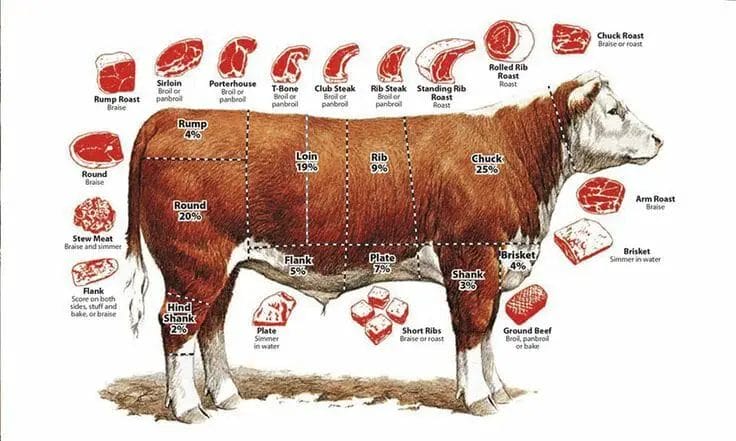
Popular Animals for Steak: Exploring the Delicious Cuts
When it comes to enjoying a juicy and flavorful steak, the choice of meat is of utmost importance. Different animals offer unique cuts of steak, each with its own distinct flavor and texture.
In this section, we will explore some popular animals for steak and delve into the mouthwatering cuts they provide.
1. Beef
Beef is the most common and widely consumed meat for steak. It comes from cows and offers a wide variety of cuts, each with its own characteristics. Let’s take a look at some popular beef cuts:
- Ribeye: Known for its rich marbling and intense flavor, the ribeye is a tender cut that is highly sought after by steak enthusiasts.
- New York strip: This cut is known for its perfect balance of tenderness and flavor. It is often praised for its juicy and beefy taste.
- Tenderloin: The tenderloin, also known as filet mignon, is the most tender and leanest cut of beef. It is incredibly tender and has a mild flavor.
- T-bone: This cut consists of a strip steak on one side and a tenderloin on the other, offering the best of both worlds in terms of flavor and tenderness.
2. Pork
Pork is another popular choice for steak lovers. It provides a tender and flavorful meat that is versatile in its preparation. Some noteworthy pork cuts for steak include:
- Pork chop: These thick, bone-in cuts are well-marbled and offer a delicious balance of tenderness and juiciness.
- Pork tenderloin: Similar to beef tenderloin, pork tenderloin is a lean and tender cut that is perfect for grilling or roasting.
- Pork ribeye: These cuts come from the same area as beef ribeye but have a slightly milder flavor. They are known for their tenderness and succulence.
3. Lamb
Lamb is a meat that is renowned for its unique and distinctive flavor. While not as widely consumed as beef or pork, lamb offers a delectable option for steak lovers. Here are a few notable lamb cuts:
- Lamb chops: Lamb chops are tender and flavorful cuts that are typically cooked to medium-rare or medium to retain their juiciness.
- Rack of lamb: This cut consists of a rib section and is often served as a delicious and elegant centerpiece for special occasions.
- Lamb leg steak: This cut is taken from the leg of the lamb and offers a lean and tender meat that is perfect for grilling or pan-searing.
4. Chicken
While traditionally not associated with steak, chicken can also provide a tasty and satisfying option for steak enthusiasts. Here are a few chicken cuts that can be prepared as steak:
- Chicken breast: Chicken breast can be thinly sliced and cooked as a steak alternative. It offers a lean and versatile meat that can be seasoned and grilled to perfection.
- Chicken thigh: Chicken thighs are known for their enhanced flavor and tenderness. They can be grilled, baked, or pan-seared for a delicious and juicy chicken steak experience.
In summary, when it comes to enjoying a mouthwatering steak, the choice of meat plays a crucial role. Beef, pork, lamb, and even chicken offer delectable cuts that can be prepared as savory steaks.
Each animal provides unique flavors and textures, allowing steak enthusiasts to explore a wide range of delicious options. Whether you prefer the succulent marbling of a ribeye, the tenderness of a tenderloin, or the rich flavor of a lamb chop, there is a perfect steak cut waiting to be savored.
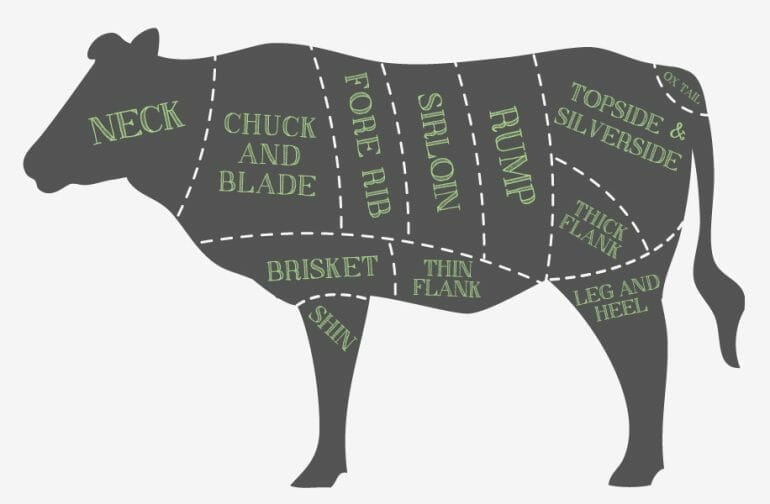
A Guide to Steak Animals: Understanding the Different Taste Profiles
When it comes to enjoying a delicious steak, understanding the different taste profiles of various animals can greatly enhance your dining experience.
Each animal has its own unique characteristics, resulting in distinct flavors, tenderness, and textures. In this guide, we will explore the most popular steak animals and delve into their taste profiles.
1. Beef
Beef is the most common and widely consumed type of steak. It comes from cattle, and its taste profile can vary depending on factors such as the breed, diet, and aging process.
Generally, beef offers a rich and savory flavor with a good amount of marbling. Marbling refers to the presence of fat within the muscle, which contributes to tenderness and juiciness. Prime cuts of beef, such as ribeye and filet mignon, are known for their exceptional taste and tenderness.
2. Pork
While pork is often associated with cuts like chops and bacon, it also offers delectable steak options. Pork steaks come from the shoulder or loin area of the pig and have a sweet, mild flavor.
They tend to be less tender than beef but can still be juicy and flavorful when cooked properly. Popular pork steaks include the shoulder blade steak and the tenderloin.
3. Lamb
Lamb is a tender and succulent meat that offers a distinct flavor profile. It has a slightly gamey taste due to the animal’s diet, which often includes grass and herbs.
Lamb steaks are known for their tenderness and can be enjoyed grilled, roasted, or pan-fried. The flavors of lamb can vary depending on the cut, with loin chops being milder and leg steaks offering a more robust taste.
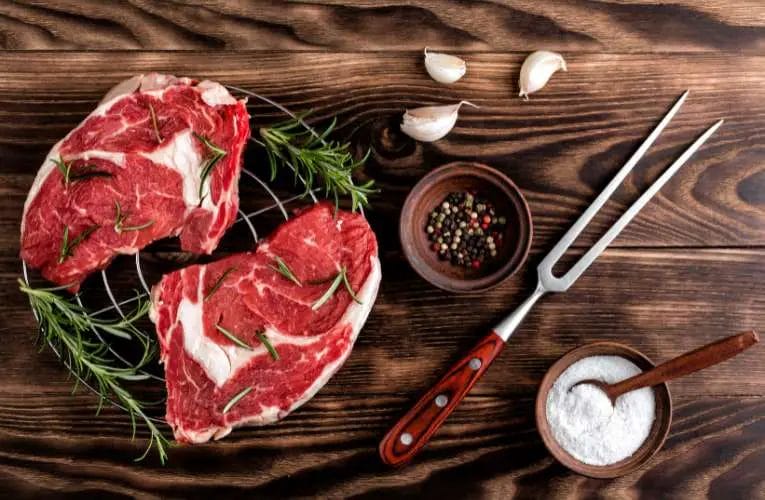
4. Venison
For those seeking a unique and adventurous steak experience, venison is an excellent choice. Venison comes from deer and has a rich, earthy flavor.
The taste of venison can be described as gamey with a slightly sweet undertone. It is known for its lean and tender meat, making it a healthy and flavorful alternative to traditional red meats.
5. Bison
Bison steaks have gained popularity in recent years due to their lean yet flavorful meat. Bison, also known as buffalo, offers a slightly sweeter and richer taste compared to beef.
It has a tender texture and is lower in fat and calories, making it a healthier option. Bison ribeye and sirloin steaks are particularly sought after for their flavor and tenderness.
6. Chicken
While chicken is often associated with poultry, it also offers steak options that are worth exploring. Chicken steak comes from the breast or thigh area and has a milder flavor compared to other meats.
It tends to be less juicy but can be made flavorful through marination or seasoning. Chicken steak is a versatile option that can be enjoyed grilled, baked, or pan-seared.
7. Fish
Fish steaks, such as salmon and tuna, offer a unique and delicate taste profile. They have a mild and slightly sweet flavor that pairs well with various seasonings and marinades.
Fish steaks are known for their tender and flaky texture, making them a popular choice for seafood lovers. Grilling, broiling, or pan-searing are common cooking methods for fish steaks.
Understanding the different taste profiles of steak animals can help you make informed choices when it comes to selecting and preparing your meals. From the rich and savory flavors of beef to the unique gamey taste of venison, each animal offers a distinct culinary experience.
So, the next time you’re at a steakhouse or planning a home-cooked meal, consider exploring the diverse range of steak animals and enjoy their exquisite taste profiles.
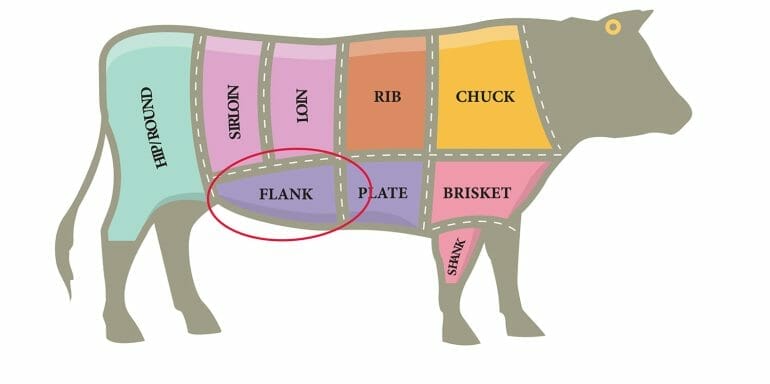
Steak Cuts and their Animal Sources: Maximizing Flavor and Texture
When it comes to enjoying a flavorful and tender steak, the cut of meat plays a crucial role. Different steak cuts come from different parts of the animal, and each cut has its unique characteristics in terms of flavor, tenderness, and texture.
Understanding the various steak cuts and their animal sources can help you make informed choices when purchasing and cooking steaks.
Ribeye Steak
The ribeye steak is known for its rich marbling, which gives it a succulent and buttery texture. This cut comes from the rib section of the animal, specifically the rib primal.
The rib primal is located closer to the front of the animal, and it contains tender and well-exercised muscles. Due to the high marbling content, ribeye steaks offer exceptional flavor and tenderness.
Tenderloin Steak
The tenderloin steak, also known as filet mignon, is prized for its unmatched tenderness. This cut is sourced from the tenderloin primal, which is situated in the central area of the animal’s back.
As the name suggests, the tenderloin is the most tender portion of the animal, making it highly sought after. Tenderloin steaks have a mild and delicate flavor, and their texture is incredibly soft.
Striploin Steak
The striploin steak, also known as New York strip, is a versatile and flavorful cut. It is derived from the striploin primal, which is adjacent to the tenderloin primal.
Striploin steaks have a good balance of tenderness and juiciness, with moderate marbling throughout the meat. This cut offers a robust beef flavor and a slightly firmer texture compared to tenderloin steaks.
T-Bone Steak
The T-bone steak is a popular choice for steak lovers who want the best of both worlds. This steak cut is obtained from the short loin primal, located in the middle-back section of the animal.
The T-bone steak consists of two cuts in one: the tenderloin on one side of the bone and the striploin on the other side. As a result, it offers a combination of tenderness from the tenderloin and flavor from the striploin.
Sirloin Steak
The sirloin steak is a versatile and flavorful cut that comes from the sirloin primal. It is situated towards the rear of the animal, closer to the hip. Sirloin steaks have a good balance of tenderness and beefy flavor.
While not as tender as cuts from the rib or tenderloin, sirloin steaks make up for it with their robust flavor and slightly firmer texture.
Porterhouse Steak
The porterhouse steak is similar to the T-bone steak, but with a larger portion of tenderloin. It is also sourced from the short loin primal.
The porterhouse steak consists of a sizable piece of tenderloin and a portion of striploin, both separated by a T-shaped bone. This cut offers tenderness and flavor in abundance, making it a favorite among steak enthusiasts.
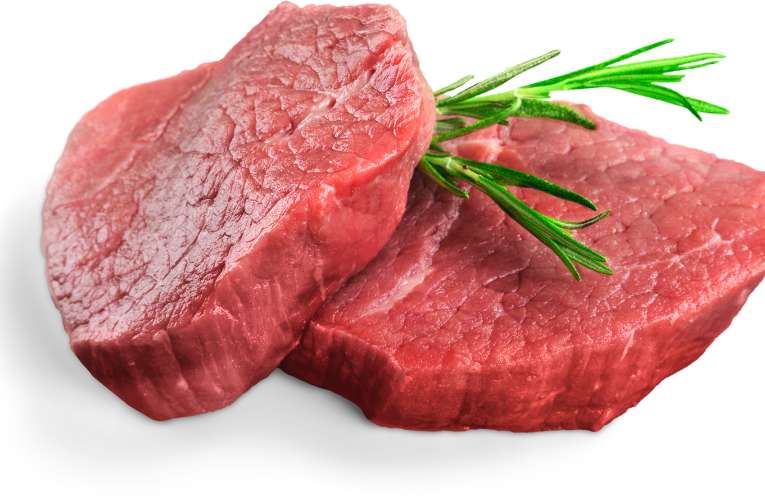
Farming Practices for Steak Animals: Ensuring Quality and Sustainability
Farming practices play a crucial role in the quality and sustainability of steak production. The way animals are raised and cared for directly impacts the taste, tenderness, and overall quality of the meat.
Additionally, sustainable farming practices contribute to the long-term health of the environment and the well-being of the animals.
In this section, we will delve into some key farming practices that are essential for ensuring the highest quality and sustainable production of steak animals.
1. Pasture-Raised Animals
One of the most important factors in producing high-quality steak is allowing animals to roam freely and graze on natural pastures.
Pasture-raised animals have the opportunity to consume a diverse diet of grasses, herbs, and other plants, which contributes to the flavor profile of the meat. This also ensures that the animals receive essential nutrients and exercise, resulting in leaner and more flavorful steak.
2. Hormone and Antibiotic-Free
To ensure the highest level of quality and sustainability, it is crucial to avoid the use of hormones and antibiotics in steak animal farming. Hormone-free farming practices mean that animals grow naturally, without artificial growth hormones being administered.
This results in more consistent growth patterns and prevents potential health risks associated with hormone use. Similarly, antibiotic-free practices promote animal health without the antibiotics entering the food chain, reducing the risk of antibiotic resistance and supporting sustainable farming methods.
3. Ethical Animal Welfare
When it comes to steak animal farming, ethical animal welfare practices are of utmost importance. Animals should be treated with respect and provided with a comfortable living environment. This includes access to clean water, proper nutrition, and adequate space for movement.
Ethical practices also involve avoiding unnecessary stress and ensuring humane handling and slaughter methods. By prioritizing animal welfare, farmers contribute to the overall quality and sustainability of the steak production process.
4. Grass-Fed Diet
A key factor in producing high-quality steak is the animals’ diet. Grass-fed farming practices involve feeding animals with natural grasses and forage. This type of diet promotes the development of lean meat with optimal levels of healthy fats, such as omega-3 fatty acids.
Grass-fed steak is known for its rich flavor, tenderness, and nutritional benefits. This practice also aligns with sustainable farming methods, as it reduces the reliance on grain production and minimizes the environmental impact.
5. Sustainable Land Management
Sustainable land management practices are essential for maintaining the long-term health of the environment and ensuring the sustainability of steak animal farming. This involves implementing strategies to minimize soil erosion, conserve water resources, and protect natural habitats.
Farmers can achieve this through techniques such as rotational grazing, which allows pastures to regenerate and minimizes soil degradation.
By adopting sustainable land management practices, farmers contribute to the preservation of natural resources and the overall sustainability of steak production.
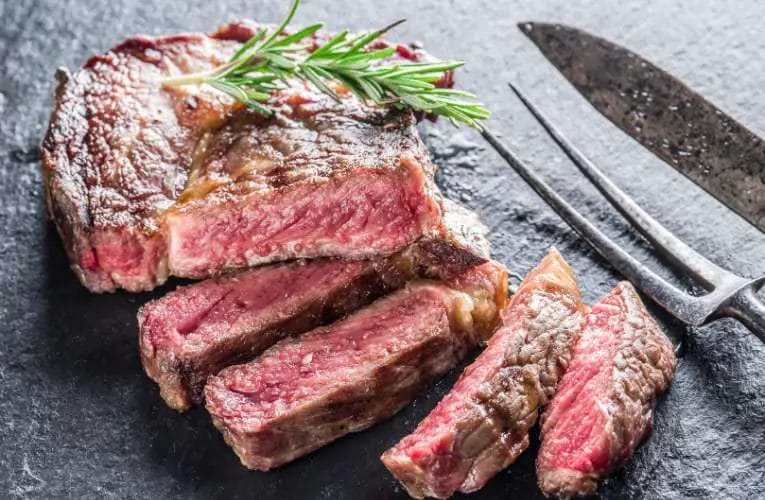
FAQs
1. What animal does steak come from?
Steak typically comes from cows, specifically from the muscles of the animal. The most common cuts of steak come from the loin or rib areas.
Conclusion:
In conclusion, steak is a culinary delight that comes from animals such as cattle, specifically from their muscle tissue.
This tender and flavorful meat is a popular choice for many meat lovers around the world. Whether it’s a juicy T-bone, a succulent ribeye, or a lean sirloin, steak offers a rich and satisfying dining experience.
Its versatility allows for various cooking methods, from grilling to pan-searing, making it a staple protein in many cuisines. So, next time you savor a delicious steak, remember the animal it originated from and appreciate the skill and craftsmanship that goes into preparing this delectable dish.

